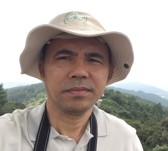The Asia Pacific BON, or AP-BON, was organized by the participants of the International Workshop for Networking Biodiversity Observation Activities in Asia Pacific Region held from July 21-22 2009, in Nagoya University, Japan. It was established as a regional network related to GEO BON, covering most countries of the Asia-Pacific region and covering all levels of biodiversity and ecosystems. As of 2017, some BONs are already operational at the national and sub-regional levels but there remains a need to organize more National BONs and organize their network, with the support of the GEO BON Secretariat and BON Development Working Group. Training courses were organized and are available through GBIF as funded by BIFA. There is however still a need to expand to other areas and parts of Asia and Pacific.
The AP BON has been working on the identification of threats to biodiversity, in particular, drivers of biodiversity loss, mangrove loss, wetland loss, and anthropogenic actions that hamper the achievement of Sustainable Development Goals. The AP BON makes the use of various technology for biodiversity monitoring at high resolution and providing large coverage such as Forest Crane, Drones and LIDAR that facilitate assessments in various ecosystems. Biodiversity databases have been established through various accessible platforms such as GBIF, ABCDNET, National Clearing House Mechanisms and the ASEAN Clearing House Mechanisms. In addition, related databases specific to certain taxa have been established.
About Asia-Pacific BONCo-Leads
 Hiroyuki Muraoka Gifu University, National Institute for Environmental Studies |
 Runi Sylvester Pungga International Affairs Division, Forest Department Sarawak |
 Yongyut Trisurat Kasetsart University, Faculty of Forestry |
| Interested to join? Click the Register button. |
Key objectives
The core objective of the AP-BON for the 2017 – 2020-time period is to move toward developing a broader network of biodiversity observations. To that extent, AP-BON will promote data sharing to increase access to biodiversity related information that will enable the effective monitoring of changes in biodiversity. Gaps in available information will be addressed by improving collaboration among researchers in observation sites, designing incentives for data publications and deriving solutions to relevant science questions. AP BON also highlighted the need to improve communication and collaboration among BONs, to identify more national, thematic and regional BONs and to reach out to other parts of Asia and the Pacific. The future of AP-BON relies on the participation of young scientists and will thus endeavour to engage them in participating in deriving solutions to conservation issues and in preparing joint publications.
AP-MBON furthers the development of marine biodiversity science in the Asia – Pacific region, as a sub-group of the MBON and Asia-Pacific BON networks of GEO BON. Its Secretariat is hosted at GODAC in JAMSTEC and can be contacted to: j-obis_jam@jamstec.go.jp. To join, please sign up to GEO BON here, and then select AP-MBON as your group of interest.
![]()
The geographic scope of AP-MBON extends from pole to pole through Asia and the western Pacific, including the Pacific islands and the Indian Ocean. It includes the deepest ocean trenches, and the Coral Triangle, the highest density of marine species on Earth, as well as the highest densities of human populations.
AP-MBON activities focus on networking researchers in the region, encouraging staff and student exchanges between laboratories, and fostering a community of practice in marine biodiversity monitoring. We welcome specialist subgroups, such as focusing on particular ecosystems (e.g., coral reefs), biomes (e.g., seagrass), habitats, taxa (e.g., seaweeds), and thematic topics (e.g., invasive and threatened species, marine reserves). Our vision is to enable reporting of trends in marine biodiversity from local to regional scales to better inform society of the state of biodiversity and how to benefit from and conserve it.
| Interested to join? Click the Register button. |
1. Biodiversity Observations in the Asia Pacific Region
| Leads | AP BON co-leads | |||
| Team/Partners | TBD | |||
| EBV Class | ||||
| Development approach | Capacity Building, Monitoring Protocol Design, Data Collection | |||
| Description | The Asia Pacific BON will continue to hold dialogues with the member organizations and partners in order to exchange biodiversity information, improve access to technology and improve the utility of shared data. AP BON will also continue to encourage the organization of National BONs, and further networking between those BONs, with the support of the GEO BON Secretariat and BON Development WG. As a result, a coordinated and integrated observation system will be promoted in each country. Components of these systems also include access support for training courses and collaborations with GBIF in order to improve skills for the development for data archiving, and the cultivation of a culture of data sharing. Finally, the AP BON will contribute to the maintenance of data platforms established through GBIF, ABCDNET, and related other databases. | |||
| Timeline | 2017 | 2018 | 2019 | 2020 |
| Milestones and/or Deliverables | ||||
| Resources | ||||
| Link with other activities | This activity will be linked with activities of the BON Development WG, particularly BD1 and BD3. In addition, this activity will be supported by the EBV Data Task Force. | |||
2. Networking in the Asia Pacific Region
| Leads | AP BON Co-leads | |||
| Team/Partners | TBD | |||
| EBV Class | ||||
| Development approach | Capacity Building, Monitoring Protocol design | |||
| Description | The Asia Pacific Bon will promote the communication and collaboration among biodiversity monitoring networks, initiatives and associate networks. Particular attention will be given to acknowledging difference in monitoring approaches, methods and the difficulty of standardizing methods. The AP BON will hence work towards deriving solutions to certain science questions from which common goals and indicators can be identified. The AP BON will also encourage the participation of researchers working in various ecosystems and facilitate their engagement in discussions and collaboration in joint publications of data papers | |||
| Timeline | 2017 | 2018 | 2019 | 2020 |
| Milestones and/or Deliverables | ||||
| Resources | ||||
| Link with other activities | This activity will be linked with activities of the BON Development WG, particularly BD1 and BD3. | |||

